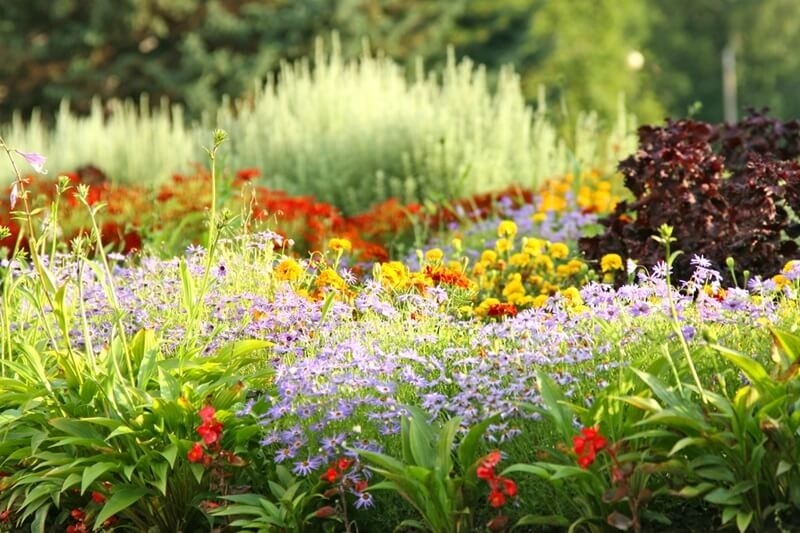
To build a cozy home garden, one should not limit one's choice of flowers to the choice of flowers one likes. Plant pairings that harmonize with each other in color, texture, and growth become the real enchantment of the garden. By mixing colors, heights, and bloom times with some premeditation and resourcefulness, you can get a garden that is always alive through the different seasons.
This manual will be revealing the ideal companion flowers for pots, delineating the emergence of mixed border planting tactics and the unveiling of using plant pairings picturing beautiful colors for your garden.
When you do garden designing, the human mind should go beyond individual plants in sight. Plant combinations are about matching different aspects such as color, texture, shape, and growth habits. The intention is to show the viewer the natural rhythm that traverses the scenery instead of letting him focus on one thing.
Those plants that are compatibly thriving usually depict light, water, and soil requirements in a similar way. This is to say that if you combine drought-tolerant species like lavender and salvia, not only will your garden receive a harmonious look, but also it will be a low-maintenance one. Whereas shade-loving combinations, such as hostas and ferns, not only provide greenery but also texture for the colder corners of the garden.
To sum it up, here are a few dos and don'ts:
Moreover, have plants that flower at different times in order to have a continuous interest in the garden.

One of the advantages of containers is the possibility of small-scale plant combinations. They give you the liberty to experiment with color and shape very easily, since you can relocate them as often as you want. When selecting the best companion flowers for pots, one should concentrate on plants that have the same watering and sunlight requirements.
“Thriller, filler, and spiller” is a definable method that can be applied in a traditional way:
Some of the best companion flowers that attract the most attention for pots are:
These couples, aside from giving maximum limited space a second life, will also create your containers a dynamic and full look.
The mixed border planting plan lets you display the shrubs, perennials, and annuals all at once in one harmonious show. Borders are often the heart of a garden, occurring beside fences or walkways. The essence is to layer plants by height and color so your garden doesn't look empty or imbalanced.
When designing your border:
For example, a border with roses, lavender, and catmint is a perfect trio for creating a lovely cottage-garden atmosphere. Roses provide the framework, lavender gives off scent, while catmint patches replace empty spaces with soft, rounded flowers.
One of the most satisfying things to do in your garden is to play around with colorful plant pairings. Color energizes or soothes your garden - vibrant contrasts give a thrill, whereas gentle harmonies bring tranquility.
Below are some common color combinations that can inspire you:
The synthesis of annual and perennial combos is like having the best of both worlds: a garden with a livable framework and constantly changing colors. The core of your garden will be constituted by perennials which return every year, while annuals will provide peals of seasonal variety.
You can take advantage of annual and perennial combos in this manner:
Moreover, by mixing these two types of plants, you ensure that even when some flowers gradually blend, there will be others to keep your garden looking attractive.
The step of layering heights for interest is what determines the depth of your garden. Instead of planting everything at the same level, you should consider vertical variation. This not only makes your garden look more natural but also allows every plant to show its unique features.
You can do this layering of heights for interest by grouping plants in three levels:
This method of layering stops your garden from looking dull and makes sure that every flower is visible. If you have a small garden, layering can also be beneficial in that it allows you to use the limited space to the maximum by being creative with vertical height.
For example, you can put tall foxgloves at the back, colorful zinnias in the middle, and lobelia, one of the plants that can be used as an edging, at the front. This is the result of a well-planned garden that is beautifully tiered.
Excellent plant combinations can also change depending on the seasons. Planning of a garden that is beautiful throughout the year requires you to take into account the times of flowers and the color changes of leaves.
If you expect your garden to flourish with great plant combinations, keep these ideas in mind:
It only takes a few plant pairs that complement each other in color to create a jaw-dropping garden display.
Combining plants together just right is a fun part of the art of gardening. Whether you're selecting your best companion flowers and partners for pots, or carefully planning the intricacies of a mixed border, every pairing that is planned with intent creates liveliness and beauty in your garden.
Color pairings can be appreciated whether you are purposefully layering before the different heights of plants, or admiring the beauty of a bed in all its varied heights of color combinations. You can structure your garden to bloom from spring to winter.
This content was created by AI